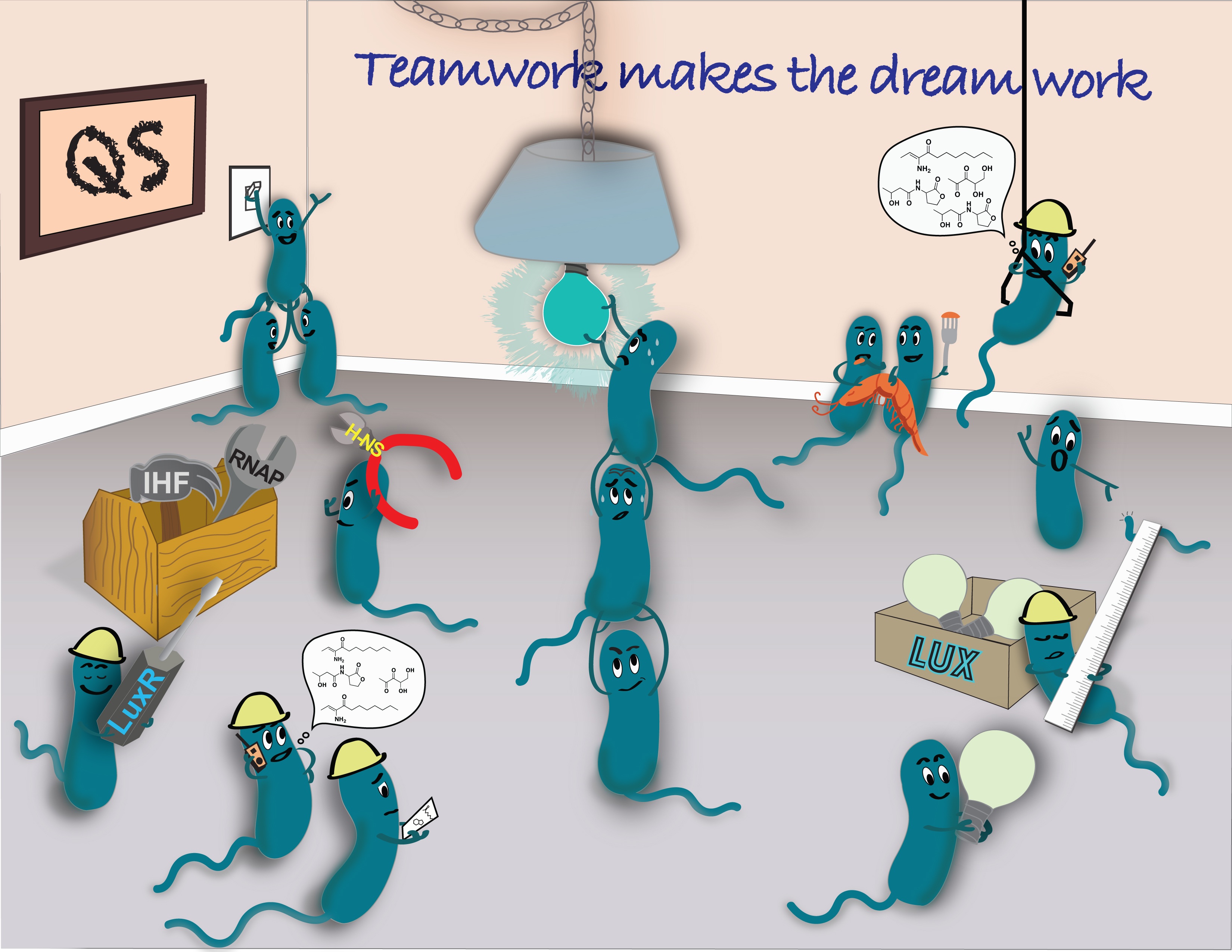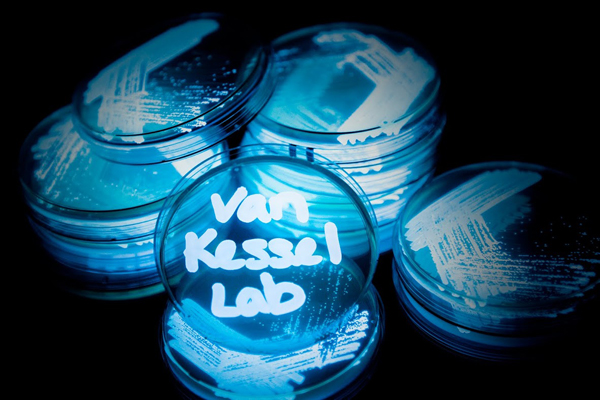The van Kessel lab studies how bacteria switch from acting as individuals to behaving as groups. Bacteria use the cell-cell communication process called quorum sensing to sense and respond to changes in the number and type of cells in the surrounding community. Through quorum sensing, bacterial cells synchronously alter gene expression to change modes of behavior.
We are interested in the genetic and molecular mechanisms that coordinate this developmental switch. The focus of our research is on LuxR, the master regulator of quorum-sensing gene expression in vibrios. Vibrios are γ-proteobacteria that live in marine environments and are pathogens of humans, fish, and shellfish. In these bacteria, LuxR functions as a transcriptional activator and repressor of more than 600 genes in a complex pattern to elicit a group behavior response. We study LuxR gene regulation in many vibrios, including Vibrio cholerae, Vibrio parahaemolyticus, Vibrio vulnificus, Vibrio coralliilyticus, and Vibrio campbellii.
Vibrio harveyi, our model bacterium, uses quorum sensing to regulate production of bioluminescence, the beautiful blue glowing color of the colonies pictured on this website. Many of the processes controlled by quorum sensing influence cell growth and development, including pathogenesis, symbiosis, and responses to nutrient stress. Our research aims to gain a mechanistic understanding of how cell-cell communication directly impacts bacteria in their environmental niches.

Click ForFull Size Image
